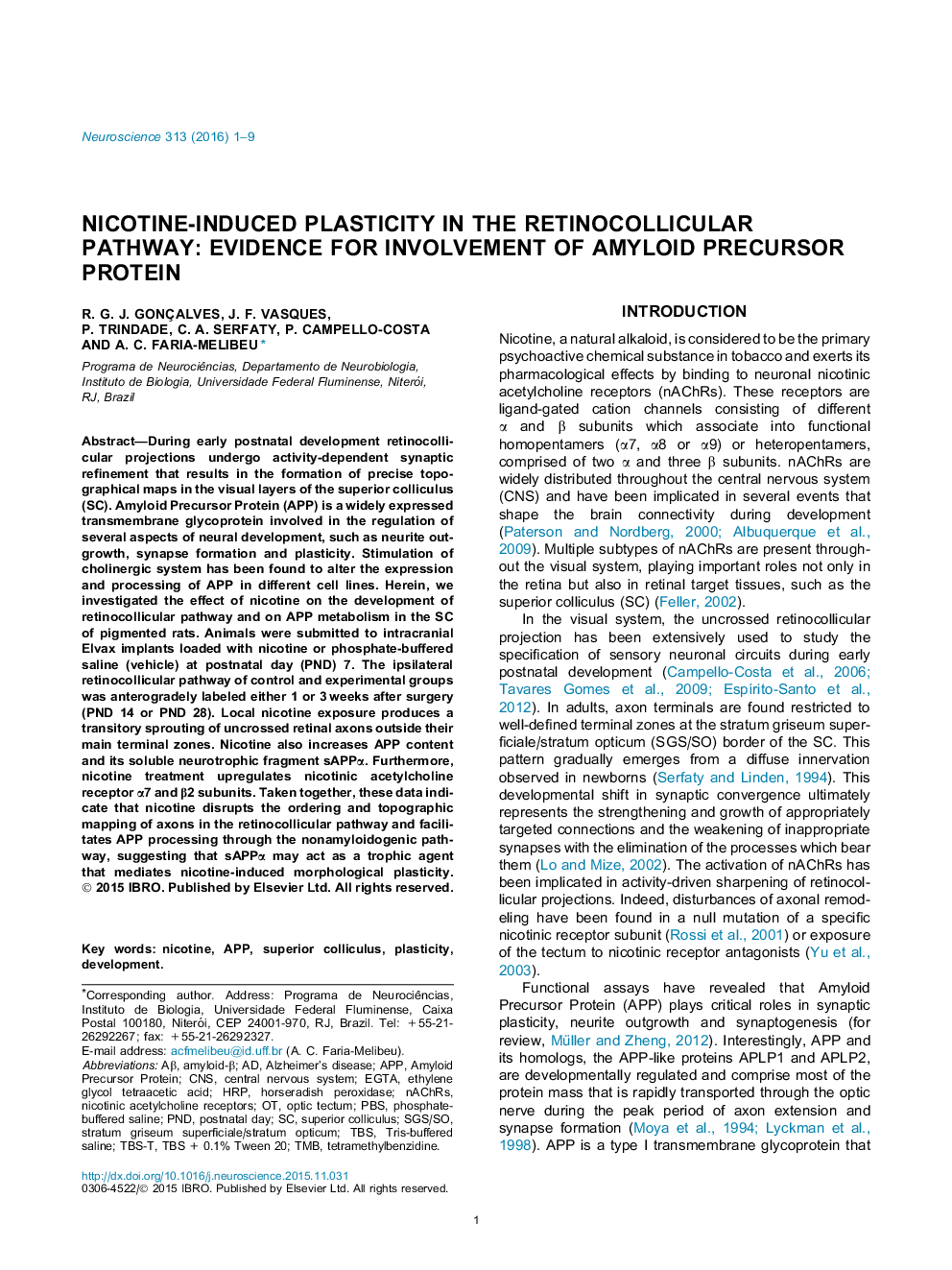| Article ID | Journal | Published Year | Pages | File Type |
|---|---|---|---|---|
| 6271378 | Neuroscience | 2016 | 9 Pages |
Abstract
During early postnatal development retinocollicular projections undergo activity-dependent synaptic refinement that results in the formation of precise topographical maps in the visual layers of the superior colliculus (SC). Amyloid Precursor Protein (APP) is a widely expressed transmembrane glycoprotein involved in the regulation of several aspects of neural development, such as neurite outgrowth, synapse formation and plasticity. Stimulation of cholinergic system has been found to alter the expression and processing of APP in different cell lines. Herein, we investigated the effect of nicotine on the development of retinocollicular pathway and on APP metabolism in the SC of pigmented rats. Animals were submitted to intracranial Elvax implants loaded with nicotine or phosphate-buffered saline (vehicle) at postnatal day (PND) 7. The ipsilateral retinocollicular pathway of control and experimental groups was anterogradely labeled either 1 or 3 weeks after surgery (PND 14 or PND 28). Local nicotine exposure produces a transitory sprouting of uncrossed retinal axons outside their main terminal zones. Nicotine also increases APP content and its soluble neurotrophic fragment sAPPα. Furthermore, nicotine treatment upregulates nicotinic acetylcholine receptor α7 and β2 subunits. Taken together, these data indicate that nicotine disrupts the ordering and topographic mapping of axons in the retinocollicular pathway and facilitates APP processing through the nonamyloidogenic pathway, suggesting that sAPPα may act as a trophic agent that mediates nicotine-induced morphological plasticity.
Keywords
APPHRPPBSTMBnAChRsTBS-TPNDEGTAAβTBSamyloid-βethylene glycol tetraacetic acidAlzheimer’s diseasetetramethylbenzidineTris-buffered salineCNSDevelopmentpostnatal daySuperior colliculusOptic tectumcentral nervous systemPhosphate-buffered salineNicotineHorseradish peroxidaseamyloid precursor proteinPlasticitynicotinic acetylcholine receptors
Related Topics
Life Sciences
Neuroscience
Neuroscience (General)
Authors
R.G.J. Gonçalves, J.F. Vasques, P. Trindade, C.A. Serfaty, P. Campello-Costa, A.C. Faria-Melibeu,
